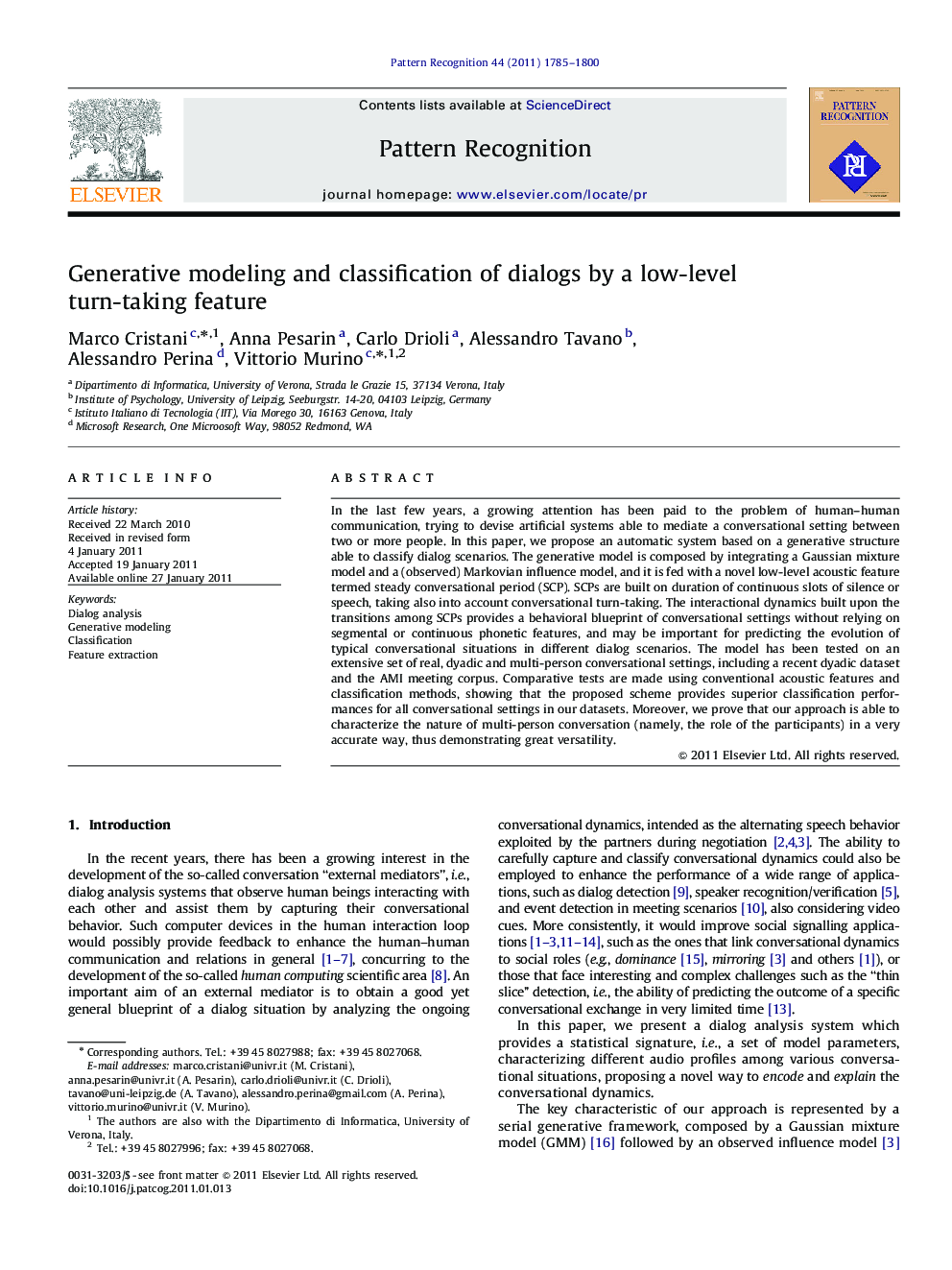| Article ID | Journal | Published Year | Pages | File Type |
|---|---|---|---|---|
| 533548 | Pattern Recognition | 2011 | 16 Pages |
In the last few years, a growing attention has been paid to the problem of human–human communication, trying to devise artificial systems able to mediate a conversational setting between two or more people. In this paper, we propose an automatic system based on a generative structure able to classify dialog scenarios. The generative model is composed by integrating a Gaussian mixture model and a (observed) Markovian influence model, and it is fed with a novel low-level acoustic feature termed steady conversational period (SCP). SCPs are built on duration of continuous slots of silence or speech, taking also into account conversational turn-taking. The interactional dynamics built upon the transitions among SCPs provides a behavioral blueprint of conversational settings without relying on segmental or continuous phonetic features, and may be important for predicting the evolution of typical conversational situations in different dialog scenarios. The model has been tested on an extensive set of real, dyadic and multi-person conversational settings, including a recent dyadic dataset and the AMI meeting corpus. Comparative tests are made using conventional acoustic features and classification methods, showing that the proposed scheme provides superior classification performances for all conversational settings in our datasets. Moreover, we prove that our approach is able to characterize the nature of multi-person conversation (namely, the role of the participants) in a very accurate way, thus demonstrating great versatility.
Research highlights► Generative models based on Markov models can explain the turn-taking of a dialog. ► Novel features are proposed, named steady conversational periods (SCPs). ► SCPs enrich the capability of a Markov framework in explaining the turn-taking. ► Different classes of dialogs can be analyzed exploiting SCPs.
